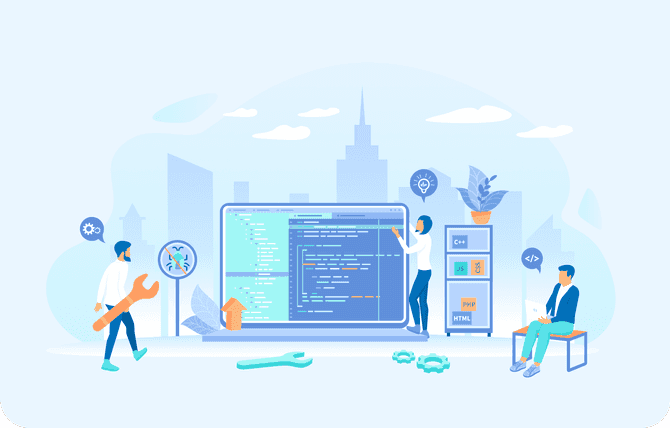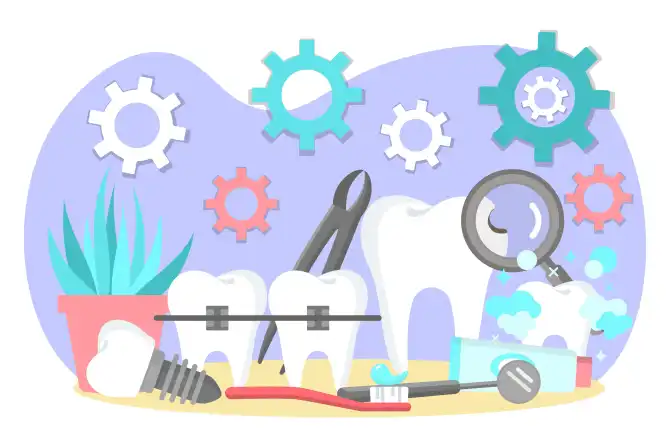
How SoftSmile is Incorporating Advanced AI and Machine Learning Into Its Digital Treatment Planning Software VISION
by SoftSmile Team in Jun 17 2024
AI is quickly transforming various aspects of our daily lives, even in how we access healthcare. To that end, SoftSmile has invested significant time and resources into incorporating AI and machine learning into its VISION treatment software to make clear aligner therapy more precise and efficient for doctors and their patients. Discover why VISION is the best advanced AI orthodontic software.
We spoke with Damian Gerikhanov, SoftSmile’s Chief Engineer about the myriad ways AI is rapidly enhancing how orthodontists utilize digital treatment planning technology. He outlines how VISION is unique in its ability to improve patient outcomes, and addresses the ethical and moral risks associated with incorporating advanced AI and machine learning into patient treatment and care.
How is the AI in VISION changing the way doctors interact with and use treatment planning software?
We are actively working on enabling an AI assistant within the VISION software. This assistant allows users to engage in a chat with the software. Essentially, it introduces itself as "VISION AI" and offers to perform various tasks.
A Doctor or technician can simply direct it by asking questions like, "How would I typically address a class two issue with a patient's mouth?" This interaction lets the user request information and tap into distilled expertise, available in the form of a chat and automated tools.
Furthermore, with this feature, users can ask the VISION AI chat for assistance with tasks such as adjusting dental molds. Currently, the process involves a dentist or orthodontist typing a request, which is then forwarded to a technician. The technician might take hours or even a day or two to address the request, leading to a prolonged back-and-forth process.
However, with a real-time chat assistant, tasks are completed much faster, allowing us to provide treatment to patients sooner, and hopefully, with fewer errors as the AI system continues to learn and improve over time.
Can you talk a little bit about how you foresee advanced AI impacting the patient experience?
AI has had a significant impact on the user and patient experience when it comes to aiding the doctor. This is because if doctors can create treatment plans quickly and with greater accuracy while minimizing the possibility of errors, it directly benefits the patient.
This is one aspect where the AI doesn't directly expose patients to its workings, but they still reap the benefits of having AI integrated into the software system. On a more direct note, patients can experience features like remote diagnosis. They can upload videos and photos showcasing their current smile and appearance, including profile and front photos, and receive an automated AI diagnosis based on these inputs. Some systems are already implementing this, although it's fair to say that this technology is still in its early stages.
Additionally, there is the potential for future developments, like using a selfie camera on a phone to visualize one's teeth as already aligned when looking at themselves in the camera – a solution rooted in AI. While there is much work to be done and many improvements desired in these solutions, we could expect them to gain popularity in the future.
I would argue that everyone in this space needs to step up. Currently, these technologies are somewhat like toys or marketing tools, providing individuals with an idea of how their teeth might look, but they lack accuracy. It's primarily a superficial tool.
However, it has the potential to be highly informative, particularly when integrated with diagnostics. I'm referring to a system that can assess your teeth via a camera and pinpoint specific issues. It could even suggest certain treatments that may be required.
We are aware that other companies are engaged in similar efforts, and we are actively working on it as well. I would say we are more or less on par with our competition, although we acknowledge that more work is needed. What's more, we can connect users with professionals who can assist, and facilitate direct communication with them. Additionally, we could help schedule appointments or consultations.
Do you foresee a time when AI-enhanced treatment planning software will do the work of an orthodontist?
I don’t. I see AI as an important set of tools that can help doctors do their very specialized jobs better, faster, and more efficiently. Ultimately, the decision to use AI still rests with the doctor. Some may be more open to it now than others but the fact is that we believe VISION can improve the entire treatment experience for both doctors and their patients.
AI serves as a tool to offer information that informs decisions. As long as AI provides accurate results within a reasonable degree of confidence, the doctor's responsibility remains paramount.
That said, we strongly believe that there should be specific safeguards in place. One key safeguard is the inclusion of disclaimers in the software to alert users that while the information may be more comprehensive compared to other solutions, it still requires validation. Initially, we should rely on disclaimers.
Moreover, over time, we could implement other methods for gathering feedback on treatment results and analyze them to adjust the model and address any shortcomings. We are actively exploring this approach and are committed to incorporating disclaimers and promptly gathering feedback.
What are your thoughts on the moral and ethical risks and responsibilities of developing technology that relies so heavily on AI and machine learning?
In response to the challenging question of how to address the moral and ethical risks associated with the widespread integration of AI, we must approach it with caution. The world is rapidly embracing AI in various domains, and addressing these concerns is a pressing issue. To move forward responsibly, transparently, with clear disclaimers, and continuous communication with users is essential. While AI technology is highly advanced and extensively tested, it is vital to stress the importance of patient care.
Try out SoftSmile’s Digital Dental Treatment Planning Software: VISION.



